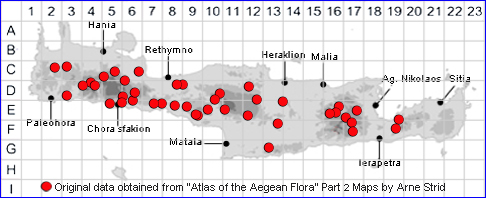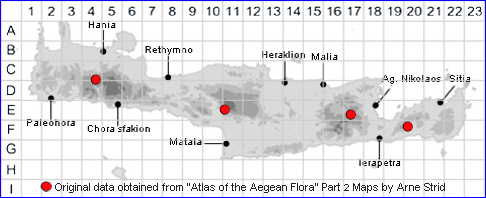

SPECIES DESCRIPTION
RANUNCULUS GRACILIS
Including:- Ranunculus rumelicus
Family and Genus:- See- RANUNCULACEAE/Subgen. RANUNCULUS/
Common Names:- None
Homotypic Synonyms:- Ranunculus chaerophyllus, Ranunculus granulatus,
Ranunculus peloponnesiacus.
Meaning:- Ranunculus (L) Little-frog, diminutive of rana, (reference to the water-
loving habit of many species).
Gracilis (L) Slender, graceful.
General description:- Perennial, with a dense cluster of ovoid root tubers 8-12 mm
long, mixed with long spindle-shaped roots.
Stems:-
1) 10-30 cm tall. 1-4, ± erect, 1 to 3-flowered, usually appressed-pubescent in the
upper part.
Leaves:-
1) Basal, long-petiolate.
a) petiole, sparsely pilose with long, erecto-patent, hairs, dilated into a scarious
sheath below.
b) lamina, broadly triangular-ovate to orbicular in outline, generally 2-3.5 cm
broad, subglabrous, 3-partite, almost to the base.
c) lobes, variously dissected into obtuse segments.
2) Cauline, few and reduced, subsessile, with broadly linear segments.
Flowers:-
1) Pedicels, terete, rather stout.
2) Sepals, 6-8 mm, broadly lanceolate, deflexed, sparsely pilose.
3) Petals, 10-14 mm, obovate, obtuse, bright yellow.
4) Receptacle, glabrous.
Fruit:-
1) Achene, body c. 1.8 mm. obliquely ovate to suborbicular, strongly compressed,
smooth, attenuate into a straight or somewhat hooked beak.
2) Beak, 1 mm. somewhat curved, nearly as long as the achene.
Key features:-
1) Basal leaves, 3-partite to or near the base.
a) lobes, variously dissected into obtuse segments.
2) Achene, body c. 1.8 mm, obliquely ovate to suborbicular, strongly compressed,
smooth, attenuate into a straight or somewhat hooked beak 1 mm.
Habitat:- Seasonally damp meadows, fallow fields, olive groves, open woodland. 0-
1100 (-1700) m. mainly over limestone.
Distribution:- Peloponnisos, Sterea Ellas and the Ionian islands, very scattered in
the C and E Aegean area. Frequent in much of Crete especially the west.
Flowering time:- Late Mar to early June.
Photos by:- Fotis Samaritakis
RANUNCULUS RUMELICUS Back to Top
Homotypic Synonyms:- None
Meaning:- Rumelicus - Meaning not known
Resembling Ranunculus gracilis, but differing in the following characters:
1) Root tubers, narrowly ovoid to oblong.
2) Blade of the basal leaves, more rounded, with 1 convex margins and broad,
obtuse lobes or teeth.
3) Leaves, more rounded, with ± convex margins and broad, obtuse lobes or teeth,
soft-pubescent, sericeous beneath.
4) Achenes tuberculate.
a) beak straight.
Habitat:- Meadows, fallow fields, olive groves, open scrub, 0-1100(-1800) m.
Distribution:- Fairly common in N Greece, scattered southwards to Mts Parnonas
and Taigetos, apparently lacking in the west. - E Balkan Peninsula, rare in Cyprus,
scattered in Anatolia. Rare on Crete although recorded from locations in each of the
four massifs.
Flowering time:- Mid-April to mid-June.
~~~~~~~~~~~~~~~~~~~~~~~~~~~~~~~~~~~~~~~~~~~~~~~~~~~~~~~~
